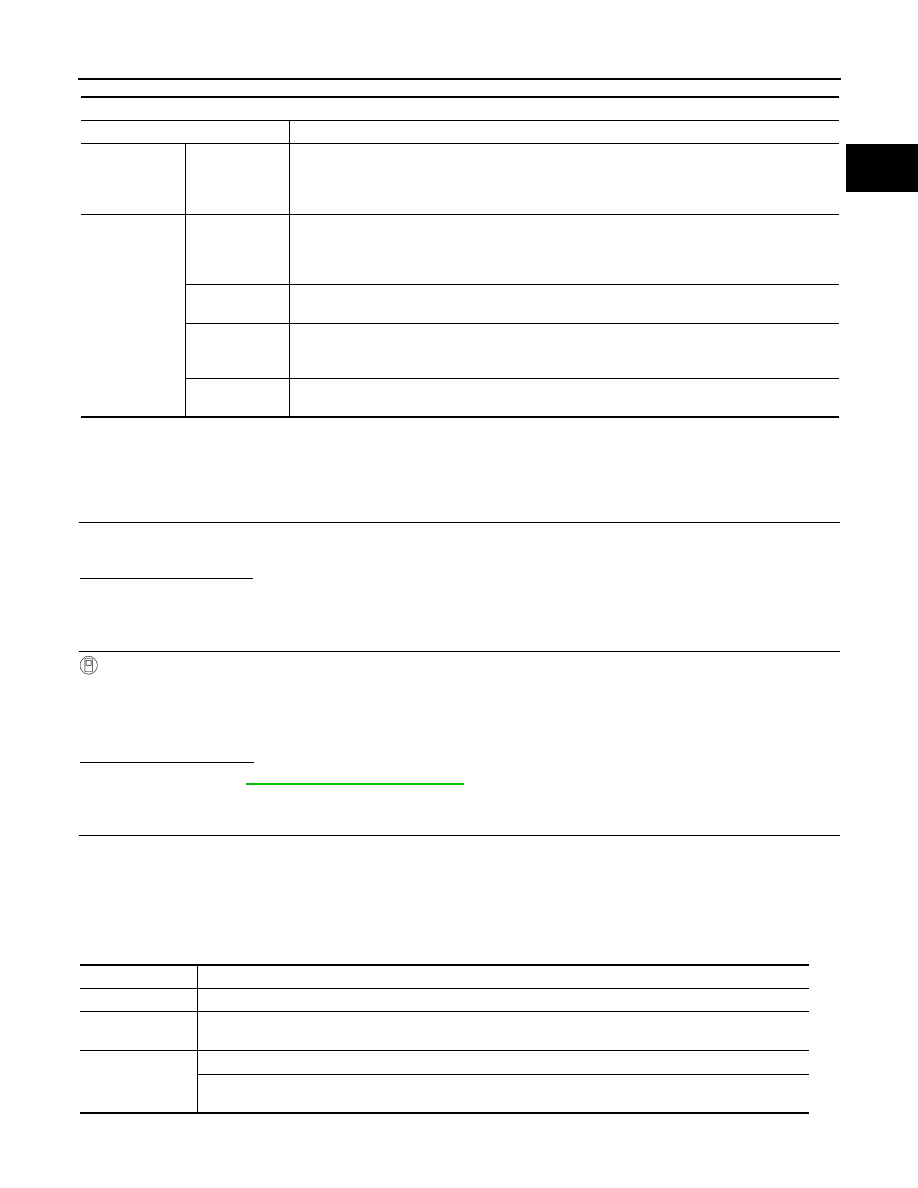содержание .. 783 784 785 786 ..
Nissan X-Trail 32. Manual - part 785

P0300, P0301, P0302, P0303, P0304 MISFIRE
EC-269
< DTC/CIRCUIT DIAGNOSIS >
[MR20DD]
C
D
E
F
G
H
I
J
K
L
M
A
EC
N
P
O
P0301, P0302, P0303, P0304
Not applicable
DTC CONFIRMATION PROCEDURE
1.
PRECONDITIONING
If DTC Confirmation Procedure has been previously conducted, always turn ignition switch OFF and wait at
least 10 seconds before conducting the next test.
Will CONSULT be used?
YES
>> GO TO 2.
NO
>> GO TO 4.
2.
PERFORM DTC CONFIRMATION PROCEDURE-1
WITH CONSULT
1.
Start engine and warm it up to normal operating temperature.
2.
Turn ignition switch OFF and wait at least 10 seconds.
3.
Restart engine and let it idle for about 35 minutes.
4.
Check 1st trip DTC.
Is 1st trip DTC detected?
YES
>> Proceed to
.
NO
>> GO TO 3.
3.
PERFORM DTC CONFIRMATION PROCEDURE-2
1.
Turn ignition switch OFF and wait at least 10 seconds.
2.
Start engine and drive the vehicle under similar conditions to (1st trip) Freeze Frame Data for a certain
time. Refer to the table below.
Hold the accelerator pedal as steady as possible.
Similar conditions to (1st trip) Freeze Frame Data mean that the following conditions should be satisfied at
the same time.
Driving time varies according to the engine speed in the freeze frame data.
Engine operating condition in fail-safe mode
Fail safe mode
Vehicle behavior
Traveling con-
trol mode
Accelerator an-
gle variation
control
ECM controls the accelerator pedal depression speed to make it slower than actual speed. This
causes a drop in accelerating performance and encourages the driver to repair malfunction.
NOTE:
ECM does not control the accelerator pedal releasing speed.
Combustion
control mode
Stratified charge
combustion
control at start-
ing
No stratified charge combustion at starting (cold start).
Idle speed con-
trol
Stops feedback control of idle speed and controls with specified speed.
Recovery speed
control at decel-
erating
Stops recovery speed control by the fuel cut at decelerating and controls with specified speed.
Idle neutral con-
trol
Stops idle neutral control.
Engine speed
Engine speed in the freeze frame data
±
400 rpm
Vehicle speed
Vehicle speed in the freeze frame data
±
10 km/h (6 MPH)
Base fuel sched-
ule
Base fuel schedule in the freeze frame data
±
10%
Engine coolant
temperature (T)
condition
When the freeze frame data shows lower than 70
°
C (158
°
F), T should be lower than 70
°
C (158
°
F).
When the freeze frame data shows higher than or equal to 70
°
C (158
°
F), T should be higher than or equal
to 70
°
C (158
°
F).